Circumscribing the Body Politic: Circumcision, Religious Freedom and Identity in Europe
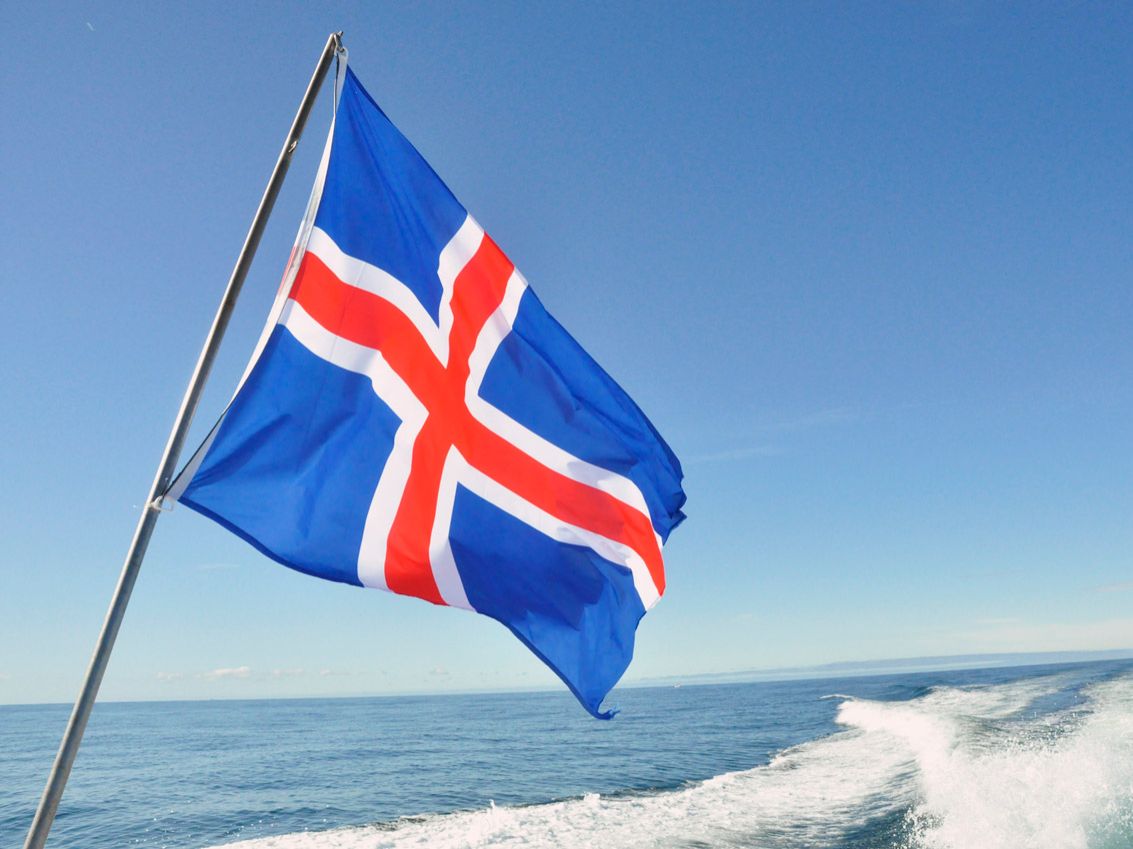
Méadhbh McIvor, Editor
In February 2018, Icelandic Member of Parliament Silja Dögg Gunnarsdóttir made international news by proposing a bill that would criminalise the circumcision of male children for non-medical reasons. The bill, which is supported by the ruling Progressive Party and Left-Green coalition, has sparked heated debates within Iceland (and beyond): while its supporters argue that circumcision is akin to child abuse, and ought, therefore, to be subject to the penalties of criminal law, its opponents point to the particular burden the law would place on Jewish and Muslim families seeking to parent within their respective religious traditions. Gunnarsdóttir, for her part, has argued that the bill is about “child protection and children’s rights”: “I don’t see it as a religious matter.”
If the bill is passed, Iceland will become the first European country to ban all forms of infant circumcision. Yet it is not the only European country considering doing so. A recent survey suggests that over 80% of Danes would support a similar ban, while Norway’s Child Ombudsperson Anne Lindboe has said she is “rooting for Iceland.” Outside of the Nordic region, a German regional court in Cologne declared in 2012 that child circumcision could be considered grievous bodily harm. While concerns over child safety are, no doubt, genuine, it is hard to ignore the fact that calls for infant circumcision to be criminalised coincide with rising anti-Semitism and Islamophobia, both within and beyond Europe’s borders.
As Iceland’s Parliament debates the issue, The Religion Factor asked scholars of law, religion, and ethics to comment on the proposed ban. Our contributors have engaged with the following questions: How does the category of “religion” get framed in debates about religious freedom? Does infant circumcision expand or limit a child’s right to an “open future”? Is there something particularly “Nordic” about the proposed circumcision ban (and, if so, is this rooted in these countries’ secular-Protestant religious heritages)? What role does xenophobia play in the discussion? Is there a moral imperative to resist laws that work to criminalise minority bodies? Is it possible to move beyond a framing of “religious rights” vs “bodily integrity”? How do the categories of “health” and “harm” work to define certain practices as “modern” or “archaic”?
With thanks to our respondents:
Richard Amesbury is Professor of Religious Studies and Director of the School of Historical, Philosophical and Religious Studies at Arizona State University, USA.
Helge Årsheim is a Postdoctoral Fellow in the Faculty of Theology, University of Oslo, Norway.
Amélie Barras is Assistant Professor in the Department of Social Sciences, York University, Canada.
Dia Dabby is a Visiting Fellow at the Centre for Human Rights and Legal Pluralism, McGill University, Canada.
Brian Earp is Associate Director of the Yale-Hastings Program in Ethics and Health Policy, Yale University, USA.
Vebjørn L. Horsfjord is Associate Professor in the Department of Humanities at Inland Norway University of Applied Sciences, Norway.
Karin Berber Neutel is a Postdoctoral Fellow in the Faculty of Theology, University of Oslo, Norway.
Josephine Nielsen is a PhD candidate in the Department of Philosophy, Queen’s University, Canada.
Atalia Omer is Associate Professor of Religion, Conflict and Peace Studies at the University of Notre Dame, USA.
Nikia S. Robert is an ordained minister and PhD candidate at the Claremont School of Theology, USA.
Pamela Slotte is Associate Professor in Minority Studies at Åbo Akademi University and Vice Director of the Centre of Excellence in Law, Identity and European Narratives, University of Helsinki, Finland.
Muhammad Velji is a PhD candidate in the Department of Philosophy, McGill University, Canada.
Isaac Weiner is Associate Professor in the Department of Comparative Studies, Ohio State University, USA.
_______________________________________________________________

Richard Amesbury is Chair and Professor of Philosophy and Religious Studies at Clemson University, USA.
When confronted with the claim that the circumcision of boys violates a universal right to bodily integrity, defenders of the practice often respond in kind – by invoking an equally universal right to religious freedom. But framing circumcision as a “religious” practice – while understandable – risks simplification and distortion, placing it in an untenable legal position. Why, it will be asked, should the rights of parents trump those of their children? Aren’t bodies more fundamental than beliefs? Why couldn’t the decision simply be postponed, until a child has reached the age of consent? Isn’t religion, after all, properly a matter of individual choice?
The problem, as I’ve argued elsewhere, is that the sort of religion protected in a liberal scheme tends to be conceived as voluntary – an option, rather than a condition of agency – and the circumcision of children is paradigmatically not this . Within Judaism, circumcision is a mark of the covenant between God and the Jewish people, and in Islam it tends to be regarded as a link to Abraham (Ibrahim). Though not mentioned in the Qur’an , it is in some hadith numbered among the sunan al-fitrah – practices that perfect the body, to which human nature is thought to be predisposed. Appealing to religious freedom on behalf of circumcision is thus ambiguous, because an individualistic and voluntaristic conception of religion is ill-suited to the cultural understandings that give the practice its meaning.
Circumcision is about belonging, and so too, I would argue, are laws forbidding it, even when they are justified in terms of the ostensibly neutral notion of bodily integrity. It is surely no coincidence that recent efforts to suppress the practice in Europe coincide with anxieties about migration and the assimilation of cultural difference. The uncircumcised penis is today the sign of the secular covenant, not because it is not religious – it is, among other things, Christian – but because it functions as a limit to the concept of free religion. The problem, in short, is not that there are multiple religions, some of the practices of which are incompatible with a shared conception of bodily integrity, but that there are multiple normative understandings of the body, some of which aspire to universality and some of which resist it. What secular law cannot recognize is religion that is not an outcome of bodily agency but its prerequisite – religion cut into the self as a condition of its being the particular kind of self that it is.
_______________________________________________________________
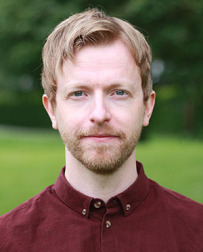
Helge Årsheim is a Postdoctoral Fellow in the Faculty of Theology, University of Oslo, Norway.
The Icelandic proposal to ban male circumcision can be framed in numerous ways. The dominant narrative in the international media is that it represents either the reasonable victory of secular rationality over harmful superstition, or a discriminatory, unnecessary and detrimental violation of the religious rights of Jews and Muslims. While these responses initially appear to be incompatible, I would argue that both are necessary corollaries of the increased legal interest in regulating religion, obliged to co-exist whatever the outcome of the proposal.
Whenever law seeks to determine the exact boundaries of “religion,” from ritual slaughter to the full face veil to the beliefs of florists, marriage registrars and bakers, there is a double bind in which seemingly incompatible frames of interpretation are always available. This double bind occurs because the existence of the legal frameworks that provide protections and exemptions for religious beliefs and practices are premised on the very tensions that animate the opposing views of the proposed bill. The legal regulation and adjudication of religion relies on the constitutive tension between polar opposites, leaving legislators and adjudicators with the opportunity to situate themselves somewhere on the scale between the promotion of “secularity” or “religion.”
Because of this double bind, attempts to depoliticize or temper the role of religious beliefs, practices or organizations by outsourcing their management to the ostensibly “neutral” legal system have largely been unsuccessful. For every legal rule that is rolled out, another item of “religion” becomes subject to the dichotomy of legality, replacing the vagueness and fuzziness inherent to many religious traditions with the either/or structure of law. In this way, beliefs and practices that were formerly contested and discussed both internally in religious communities and at the boundaries between “religion” and society increasingly become subject to laws requiring a definitive boundary between the core and the periphery of “religion.”
The Icelandic proposal to ban male circumcision sits at the heart of this dynamic. To detractors, it becomes yet another item in the growing inventory of policies blind to the needs of precarious minorities; to supporters, it appears as the only sensible response to a barbarous practice that belongs in pre-modern societies. Largely ignored in this discussion are the multiplicity of views from within, among the constituencies potentially affected by the proposal. As with any other religious practice, circumcision means different things to different people, the majority of whom are unlikely to have had any specific opinion about it at all – until it suddenly became a lightning rod, a stand-in for the boundaries between “good” and “bad” religion in Icelandic society.
_______________________________________________________________

Amélie Barras is Assistant Professor in the Department of Social Sciences, York University, Canada.
Dia Dabby is a Visiting Fellow at the Centre for Human Rights and Legal Pluralism, McGill University, Canada.
Debates over male circumcision often frame the issue as one of protecting religious freedom – in which case circumcision must be allowed – or of preventing practices that are deemed harmful to the health of the child, in which case it must be banned (see Horsfjord, 2017). This either/or framing leaves little space to consider the complexity of the issues involved.

We set aside the either/or debate and instead ask: what is being produced and erased when male circumcision is designated solely as a “health matter”? Not unlike arguments made by scholars who have explored the consequences of describing an issue exclusively through the lens of religious freedom,[i] this health “cloak” participates, in our opinion, in depoliticizing and de-historicizing a practice that has traditionally crossed religious lines with ease. Yet, if we approach the Icelandic bill not as an isolated proposal but as part of increasing attempts by “liberal” governments to “save” religious minorities from their “barbaric practices,” this context becomes more difficult to normatively ignore. As with proposals to ban halal and kosher meat slaughtering practices (see Sherwood, 2018), banning “non-medical” circumcision targets and isolates racialised minorities at a time when the far right is on the rise in Europe, along with Islamophobia and anti-Semitism.
Critically evaluating “health discourse” draws attention to the way “health” gets constructed and linked with notions of modernity and progress . By using “health” as a signpost, or legal shorthand, the proposed law pits medical circumcision against non-medical circumcision. The former is understood as acceptable precisely because it is authorized by “modern” health practitioners, whereas the latter is labeled problematic, the residue of “archaic” religious norms. In other words, while health discourse works to render invisible the religious dimensions of the proposed bill, these dimensions nonetheless remain deeply entrenched in its structure. It is through the “othering” of the religious that the proposed bill serves to (re)produce and (re)assert the superiority of “modern” medicine.
In fact, health’s role in validating the connection between circumcision and modernity is not new. Male circumcision became a widespread practice in Europe in the 19th century and early 20th century precisely because it was identified as a marker of modernity.[ii] It was a practice authorized and encouraged by health practitioners at the time, as it was thought to cure men of all sort of illnesses and “immoral” behaviors. It was also a sign of upward mobility, as it indicated hospital birth.
By the turn of the 20th century, the “modernity” of male circumcision was further bolstered by being pitted against female circumcision, with the latter described as an “archaic” practice that had to be eliminated. This historical detour renders visible the power of health discourse, which is used to regulate and delimit “modern” practices from “outdated” ones. While it was used to promote male circumcision fifty years ago, the same argument is now employed to regulate and circumscribe the practice. In neither instance, however, are the apolitical, ahistorical and “neutral” claims of health discourse questioned. In both instances, this discourse comes out as the champion of freedom, liberalism and modernity.
_______________________________________________________________
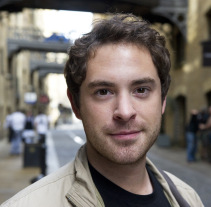
Brian D. Earp is Associate Director of the Yale-Hastings Program in Ethics and Health Policy, Yale University, USA.
This debate will come down to a few key issues: first, the question of harm , and second, the question of unequal treatment based on sex or gender (currently, all forms of non-therapeutic female genital cutting, no matter how slight, and no matter how important culturally or religiously to the parents, are illegal in Iceland if performed on a child before she can provide informed consent).
Concerning harm, seen from a legal perspective, I offer an in-depth discussion in “Circumcision, Sexual Experience, and Harm.” I argue that there is more to assessing harm than debating “medical” benefits versus risks. In this case, the sheer (involuntary) loss of a healthy, functional, and erotogenic sleeve of tissue—i.e., the foreskin, the part of the penis removed by circumcision—is sufficient for harm, whatever else may follow from the surgery. Whether that harm is “worth” the alleged benefits (medical or otherwise) is a personal decision that should be left to the individual who will have to live with the consequences.
Concerning sex or gender: the proposed bill is not actually specific to male genital cutting (MGC), but rather is an adaptation of an existing law that prohibits non-therapeutic female genital cutting (FGC), simply changing the word “girls” to “children.” It is often argued that FGC is much worse than MGC, both physically and in terms of meanings or motivations, but it depends on which form is compared. Both kinds of cutting fall on a wide spectrum across cultural groups, with some instances of FGC—including the so-called ritual “nick”—being less invasive than male circumcision, yet often performed for similar “symbolic” reasons. This form, as noted, is already illegal in Iceland, regardless of its religious significance for some groups.
_______________________________________________________________
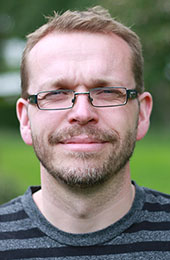
Vebjørn L. Horsfjord is Associate Professor in the Department of Humanities at Inland Norway University of Applied Sciences, Norway.
If Iceland were to become the first country in Europe to ban ritual male circumcision, it would undoubtedly reignite simmering debates on the issue in other Nordic countries. In Denmark, for example, doctors and activists have argued for a ban on circumcision on boys under the age of 18, and in Norway the governing Progress Party supports a similar ban in principle (although – so far – they have not promoted it actively). The Nordic countries share a history with a strong Lutheran tradition, but are also known to score low on indicators of religious conviction and practice. All of this comes into the equation when male circumcision comes on the agenda.
We often assume that public debate involves weighing conflicting arguments against each other, with the stronger winning out. However, my ongoing research at the Faculty of Theology, University of Oslo suggests that, when it comes to debates about circumcision in Norway, this is at best happening in an indirect way. Having read approximately 500 texts from Norwegian newspapers about male circumcision, one of the strongest impressions I am left with is that those with clear views on the topic rarely engage with the arguments of the “other side.” Instead, there is a struggle over how to frame the issue: Is male circumcision “really” about protecting children against a harmful medical practice, or is it “really” about the rights of Jews and Muslims to practice their religion? Those who insist on a religious freedom framing seldom engage with the medical arguments against circumcision, and those who insist on a medical framing often don’t mention religion at all. The conclusion more or less follows from the framing.
It is a little more nuanced, though, and this concerns whether Jews or Muslims are in focus. The Jewish community in Norway is minute, and the overwhelming majority of male circumcisions happen among Muslims. In the public debate, however, circumcision is framed as a Jewish practice five times more frequently than it is framed as a Muslim practice. And while framing it as a Jewish practice correlates with a positive view on circumcision, a Muslim framing pulls in the opposite direction. This seems to give some support to those who suspect that initiatives to ban circumcision are aimed at the Muslim community, and that negative consequences for Jews are “collateral damage.”
This might bring some consolation to those wary of anti-Semitic sentiments, were it not for the fact that half of newspaper texts on circumcision do not mention Judaism or Islam at all. It is in these texts that the strongest anti-circumcision sentiments are expressed. There are several possible explanations. Perhaps some who participate in the debate harbour anti-Semitic or anti-Muslim views (or both), but choose to divert attention from religion. But it is also possible that, to many secular-protestant Norwegians, religion that takes on such outward expressions and cannot easily be relegated to the sphere of private conviction is such an anomaly that it simply does not deserve a space in the equation.
_______________________________________________________________
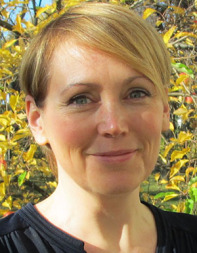
Karin Berber Neutel is a Postdoctoral Fellow in the Faculty of Theology, University of Oslo, Norway.
“I don’t see it as a religious matter.” Icelandic MP Silja Dögg Gunnarsdóttir’s take on male circumcision came as a surprise to those who actually practice circumcision, as did her proposal for a ban. Yet from a certain Northern European perspective, her assessment makes a lot of sense. How can a cut to a boy’s genitals be religious, if religion is understood as something freely chosen by adult individuals? The dominant view in Nordic countries, dependent on the Lutheran tendency to equate religion with internal, private beliefs, leaves little room for “practice” or “belonging” as fundamental to religion. Gunnarsdóttir’s objections to circumcision arise from the same perspective. While circumcision may not usually lead to complications, “one [complication] is too many if the procedure is unnecessary.” And that it is unnecessary is taken as a given.
If we imagine the decision of whether or not circumcision should be allowed as balancing arguments for and against the practice on a scale, in this “Nordic” view the pro-circumcision side is empty, meaning that any argument against immediately tips the balance. Rabbi Pinchas Goldschmidt’s retort that parents should then also stop taking their children skiing actually illustrates the divide. In the case of skiing, certain benefits can be weighed up, in terms of enjoyment, health, or national tradition, that may make the risk of injury worth taking. When considering the possible benefits of circumcision, however, those outside of circumcising traditions seem increasingly likely to draw a blank. The joint statement by the Nordic Ombudsmen for Children serves as an example. Since there are “no health-related reasons for circumcising young boys in the Nordic countries” – health apparently being the only possible reason that can be imagined – circumcision should not be performed before the boy is old enough to consent. Weighing something as foreign as the right to be circumcised on the eighth day, in accordance with Jewish tradition, appears an impossible feat.
If anything will tip the scale against a ban, it is likely to be the threat that such a measure would effectively ban Jews from Iceland. It seems increasingly possible, however, that a ban will be implemented at some point – and that a Nordic country will be the first to do so.
_______________________________________________________________

Josephine Nielsen is a PhD candidate in the Department of Philosophy, Queen’s University, Canada.
While a ban on male infant circumcision for non-medical reasons in Iceland may be seen as going against the freedom of religion of parents, it may also be seen as protecting the future autonomy rights of the children in question. Yes, parents have the prerogative to raise their children as they see fit, but we put limits on this freedom – if parents’ actions are thought to harm children, either in the present or in the future, we tend to frown upon those actions. It may be the case that male infant circumcision for the purpose of religious membership could be viewed as such a harm. Circumcision, after all, is a permanent marking of a person’s body – once it is done, it cannot be undone. This means that, if an individual who was brought into a religious community as a child, and is marked through circumcision, chooses to leave that community as an adult, they will always be marked as a member, or at least as a past member.
In a time when the majority of infant boys were circumcised for non-medical and non-religious reasons, such a marking would not signal any kind of previous religious affiliation. But now if, in fact, non-medical and non-religious infant male circumcision is going out of favour, then such a marking will identify these individuals for the rest of their lives. This, in a way, reduces the future autonomy of these infant males to decide how their bodies will be marked. Such an involuntary marking, I think, should be a concern for those of us in liberal societies who value personal autonomy. This is not to say that parents don’t have good reasons for wishing their infant male children to be brought into their religious communities in the fullest sense. However, I question whether the current wishes of parents should be seen as trump cards over children’s future autonomy. While this topic should, of course, be open for discussion, we need to take the infant male children’s future autonomy into greater consideration than has been in the past.
_______________________________________________________________

Atalia Omer is Associate Professor of Religion, Conflict and Peace Studies at the University of Notre Dame, USA.
My main concern with the mobilization against circumcision in Iceland and Denmark is that it generates an odor of Eurocentric, orientalist discourse, thereby inflicting moral injuriescontrary to the supposed benevolence of protecting children and the universalizing language it relies on. This is the case regardless of how strongly the opposition to circumcision is framed in terms of “public safety” and “health,” an argument that is especially dubious considering the rarity of circumcision (or Jewish and Muslim people, for that matter) in Iceland. The leveraging of health functions similarly to how freedom of speech and other apparently benign vocabularies and rights discourses are invoked by various stakeholders in “European values.” The issue is not whether this religious practice is right or wrong, but how it functions in a broader sexual politics, as Judith Butler and Jaspir Puar have shown in their respective analyses of the employment of the commitment to LGBTQI rights as a xenophobic, anti-immigrant and mostly Islamophobic mechanism of exclusion, control, and biopolitics.
The mobilization against circumcision also echoes what Sara Farris terms “femonationalism,” by which she means the employment of the language of women’s rights by right-wing populists, neoliberals, and some feminists, as well as their combined efforts to use the demonization of Muslim men for the advancement of their own political and economic objectives. The proposed circumcision ban cannot be viewed apart from the instrumentalization of LGBTQI and feminism in the service of anti-Muslim populist sentiments.
To reiterate, the critique is not about whether the practice of circumcision is harmful. My critical reflection is grounded in how familiar the argument is that labels such practices as categorically “barbaric” and seeks to “rescue” children or women from their apparent false consciousness and oppression. Indeed, one need go no further than Sander Gilman and others’ responses to Susan Moller Okin’s “Is Multiculturalism Bad for Women?” What the recent fixation on circumcision does bring into a renewed clarity, however, is the intersection and interrelation between Islamophobia and antisemitism, as well as their rootedness in Europe as a set of discourses and practices. Targeting the practice of circumcision challenges the discursive effort to assimilate Jews, the former “other” of Europe, into a civilizational narrative that targets another “other.”
_______________________________________________________________
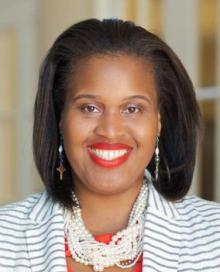
Nikia S. Robert is an ordained minister and PhD candidate at the Claremont School of Theology, USA.
From antiquity, the law has insidiously marked marginalized bodies with punishment, resulting in a discursive violence that targets the most vulnerable. This was the case for U.S. slavery, Europe’s Holocaust, global incarceration and the proposed criminalization of circumcision in Iceland. The legislating of bodies is, and has always been, a violent event that encroaches upon human agency and freedom.
In a shameful history of global violence, however, there is a rich tradition of resistance. This is captured by a critical question: Is it ever morally right to violate unjust laws to survive? History has proven that legal decisions are not always moral. In such cases, there is, at times , moral license to appeal to a higher law – God’s law. Thus, if the unjust ban on circumcision passes, I argue that resistance is merited to secure liberation using alternative and extralegal means. This is a counter-cultural act of resistance that is consonant with a tradition of civil disobedience advocated by political and religious leaders from Thoreau to Gandhi to King.
Promoting laws that target Iceland’s small minority of Muslims and Jews (but not the secular-Protestant majority) constitutes not just a political or religious problem, but a race one. This is what makes the ban unjust – if the principle to police religious and racialized bodies is universalized, our liberties will be dangerously forfeited. Hence, the proposed ban is not just an Icelandic issue, but a perennial problem that implicates the world.
Perhaps this is why the deplorable cradle-to-prison pipeline is not just a U.S. phenomenon, but employs the same logic used to justify the criminalization of circumcision. In the U.S., which has the highest incarceration rates in the world, the cradle-to prison-pipeline denotes the ways in which punitive systems are designed to disproportionately criminalize black and brown bodies from birth by eliminating the resources, access and opportunities needed to survive. As such, while a white boy born in 2001 has a 1 in 17 chance of going to prison in his lifetime, a black boy born in 2001 has a 1 in 3 chance. When assessing the proposed ban, we must consider the ways in which a similar pipeline will funnel vulnerable religious minorities to prison for practicing their God-given right to religious freedom.
In these cases of discursive violence, the most vulnerable – Muslims, Jews and cultural proponents of circumcision – must resist. And those of us beyond Iceland’s borders must forge deep solidarity. In her book Enfleshed Freedom , womanist scholar M. Shawn Copeland writes: “Humanity is no mere aggregate of autonomous, isolated individuals. Humanity is one intelligible reality—multiple, diverse, varied, and concrete, yet one. Whether white or red or yellow or brown or black; whether male or female, whether Iranian [or Icelandic], Mexican, Australian or Chinese, Irish or Kenyan, human beings are intrinsically, metaphysically, ineluctably connected.” Hence, with a sense of shared struggle and mutuality, we must express our indignation and oppose the criminalization of circumcision. Instead, let us stand in a tradition of resistance to appeal to a higher morality, to “enflesh” freedom in extralegal ways, and to live fiercely and faithfully while securing social flourishing – until the law loosens its stronghold on the body, and reaches toward liberation for all.
_______________________________________________________________

Pamela Slotte is Associate Professor in Minority Studies at Åbo Akademi University and Vice Director of the Centre of Excellence in Law, Identity and European Narratives, University of Helsinki, Finland.
“In my opinion, we should never ever violate the human right of a child or cause a child an unnecessary harm, doesn’t matter what the intentions are…”
There is something deceptively straightforward about the idea that we encounter the limits of freedom at the point when we are dealing with “harm.” The boundary stands as though it were intuitively obvious, even if we concede that self-harming behaviour on the part of adults must be tolerated, at least to some extent.
In the Icelandic case, however, the boundary is depicted as absolute. Small children are unable to consent to acts that may cause “harm.” Unless absolutely necessary on medical grounds, the argument goes, physical integrity and autonomous choice must take precedence over other concerns, regardless of how painful, pain free, large or small the surgical procedure in question turns out to be. Thus, while the Convention on the Rights of the Child acknowledges both children’s own agency and their need for direction and guidance by adults – suggesting that until a child gains independence as a full, rights-bearing subject, parents are key to exercising the rights of their children on their behalf – the proposed law would remove permanent physical alterations from the realm of parental responsibility.
In the same way as references to “conscience” stand out as a way to further the deregulation and “dejuridification” of religion – think of different “exceptions” for religious individuals and groups from generally applicable law – references to “harm” in this case seek to advance the juridification of religion. Talk of “harm” could potentially result in the prohibition of infant ritual circumcision, notwithstanding a constitutionally protected right to freedom of religion or belief.
Yet what constitutes “harm” is not straightforward. Rather, we are dealing with a porous concept. Even if one approaches circumcision as a purely physiological intervention, this is understood and articulated in different ways. It can be seen as “harmful” or, alternatively, as a ritual through which the child in question becomes part of a community in a covenant relationship with God, as in the case of Judaism.
Thus, to insist on talking of “harm,” and to seek to regulate this practice accordingly – that is, through criminal law – suggests an unwillingness or inability to acknowledge other understandings of what is taking place. Alternative approaches, in which the ritual is contextualised in such a way that it has foundational importance, might resist the dichotomy of “harmful” and “harmless.” Talking exclusively in terms of “harm” can only flatten the discussion.
_______________________________________________________________
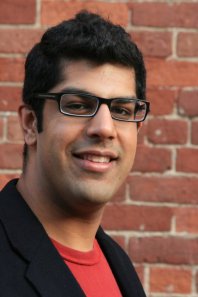
Muhammad Velji is a PhD candidate in the Department of Philosophy, McGill University, Canada.
“We are talking about children’s rights, not about freedom of belief. Everyone has the right to believe in what they want, but the rights of children come above the right to belief.” This quote from Silja Dögg Gunnarsdóttir, who proposed the circumcision ban in Iceland, highlights two key misunderstandings in this controversy: one about the nature of non-Protestant religious belief, the second about children’s rights.
When Gunnarsdóttir claims a “right to believe” she means “belief” in an inner, private, psychological manner – a “Protestantized” understanding of belief. From this perspective, belief is inviolable; the government can’t go inside your head and force you to believe circumcision is wrong. By this logic, banning a manifestation of religion is not violating a right to believe. But to practice-based religious systems such as Judaism and Islam, this is not what belief means. In the case of Islam, faith is a verb rather than a presupposition. Belief is following an adab or correct behaviour in the total process by which a person is educated, guided, and formed into a good Muslim.[iii] Having faith, then, is a capacity one gains through hard work on the self, a training regime much like athletics.
The worry about children’s rights is either that circumcision is an irreversible procedure that does harm to the child or that it might limit what Joel Feinberg has called a child’s “right to an open future.”[iv] Yet circumcision does not have a monopoly on harm or risk. As De Wispelaere and Weinstock point out,[v] maintaining the weight necessary for gymnastics can interfere with regular menstruation and puts a girl at higher risk of developing an eating disorder. And while Icelanders were thrilled by their team’s progress to the World Cup, this was only possible because some parents put their children in harm’s way, as studies indicate that concussion-like symptoms can arise from “heading” a soccer ball. Banning circumcision for reasons of harm, then, seems to go too far, for according to this logic, other practices that Icelandic parents hold dear should also be banned.
Despite the risks, allowing children to practice gymnastics and soccer has benefits, one of which is the more “open future” gained from building capacities that can only be achieved at an early age. But the same may be true of circumcision. For Muslim parents, belief cannot just be switched on through an act of will at the age of eighteen. It is a capacity one gains through training in the right habits over time. Circumcision inaugurates their sons into the community, allowing them to have the capacity “to believe what they want.” Seen in this light, a ban on circumcision closes , rather than expands, Muslim and Jewish children’s right to an open future.
_______________________________________________________________
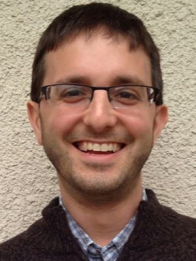
Isaac Weiner is Associate Professor in the Department of Comparative Studies, Ohio State University, USA.
There is much that could be said about the debate surrounding Iceland’s proposed anti-circumcision bill, an ostensibly neutral measure that would disproportionately burden the country’s minority Muslim (and Jewish) communities. But above all, it is worth considering what the bill’s advocates mean when they insist that it is not “against religion.” One of its sponsors cites the United Nations Convention on the Rights of the Child, which “states that children who are capable of forming their own views have the right to ‘express those views freely.’” The assumption here seems to be that by preserving a child’s right to choose for themselves whether to undergo circumcision, the bill does not violate religious freedom but actually promotes it. In other words, the bill’s proponents suggest that whatever else religion might entail, it is essentially a collection of freely chosen beliefs or “views.” These beliefs may be expressed through external practices or symbols, but it is the choice of what to believe that is prior and preeminent. This notion is even reinforced by framings of the Iceland debates that pit the rights of the child against those of the parent. It is assumed that the parent, too, might enjoy a right to act on their child as an expression of their own freely chosen beliefs. In either case, it is the right to choose that is ultimately what is protected by guarantees of religious freedom.
Such a conception fails to account for the ways that practices like circumcision might be interpreted as fundamentally constitutive of religious commitment and identity, rather than merely an “expression” of it. It fails to consider how circumcision might be understood as preceding, or even giving rise to, proper ways of believing and being in the world. It fails to take seriously what its Muslim and Jewish practitioners might mean when they describe it as a “necessary” procedure. By treating bodily practices like circumcision as secondary and thus peripheral to what really matters, Iceland’s bill adopts a neutral, evenhanded approach to regulating religion that conceals the historically contingent and contested notion of religion on which it relies. The logic of Iceland’s proposed bill is in fact a secular logic that underlies much modern governance of religion, one that hides its own particular religious genealogy. It is a logic that can make it seem obvious how a bill directly targeting a minority religious practice might not seem to be about “religion” at all.
_______________________________________________________________
[i] Sullivan, W.; Hurd Shakman, E.; Mahmood, S. and Danchin, P. (eds). 2015. Politics of Religious Freedom . Chicago: University of Chicago Press.
[ii] Barras, A. and Dabby, D. 2014. Only Skin Deep: Revising the Secular Narrative through Circumcision. In Globalized Religion and Sexuality . H. Shipley (ed). Leiden: Brill, pp. 86-109.
[iii] Lapidus, I. 1984. Knowledge, Virtue and Action: The Classical Muslim Conception of Adab and the Nature of Religious Fulfillment in Islam. In Moral Conduct and Authority: The Place of Adab in South Asian Islam . B. Daly Metcalf (ed). Berkeley: University of California Press.
[iv] Feinberg, J. 1980. The Child’s Right to an Open Future. In Whose Child? Children’s Rights, Parental Authority, and State Powe r. W. Aiken and H. LaFollette (eds) Totowa, NJ: Rowman and Littlefields.
[v] De Wispelaere, J., and D. Weinstock. 2015. The Grounds and Limits of Parents’ Cultural Prerogatives: The Case of Circumcision. In The Nature of Children’s Well-Being. A. Bagattini and C. Maclead (eds). Dordrecht: Springer, pp. 247-262.

